Folding Ideas: A Guide to Trifold Brochure Layouts
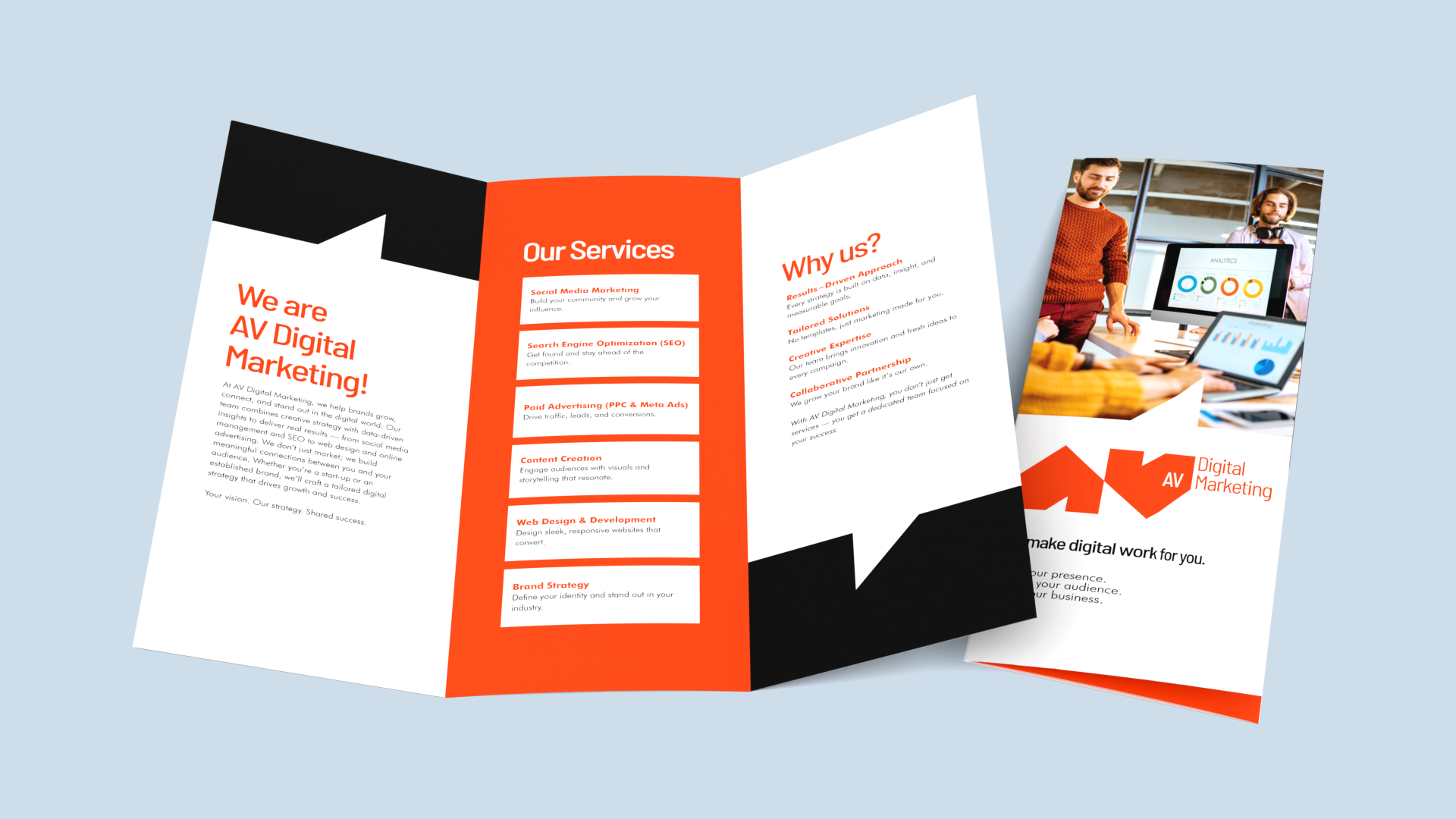
Part of a brochure's charm is its creative shapes and folds, each offering unique ways to read the material. Printers usually offer half-folds, z-folds, and gatefolds, each with its own advantages to make the brochure stand out. But the trifold brochure layout is by far the most popular choice, and it's easy to see why. With three neat panels that fold naturally, it keeps the information organized, flows naturally, and is simple to follow. Plus, its compact, folded size makes it easy to hand out, slip into a folder, or tuck into a bag.
Designing a fluid and visually appealing layout is simple if you understand how the content is typically arranged for each panel. This article will guide you in designing a standard trifold brochure, explaining what content works best in each section.
Layout Design: How a Trifold Brochure Works
Trifold brochures often come in different sizes, but their orientation is consistently in landscape, divided into three panels.
The typical trifold brochure folds the right panel first, then the left, so when someone opens it up, the content feels like it's unfolding step by step.
Layout-wise, there are numbers assigned to each section, indicating the brochure’s flow when unfolded and read by a client. Designing your trifold brochure layout gets simpler when you know what each panel number does.

Panel 1: This section is the outside front cover, found on the outer, left wing of the folded brochure. This area is where the main image, the name of the company, and strong call-to-action are found.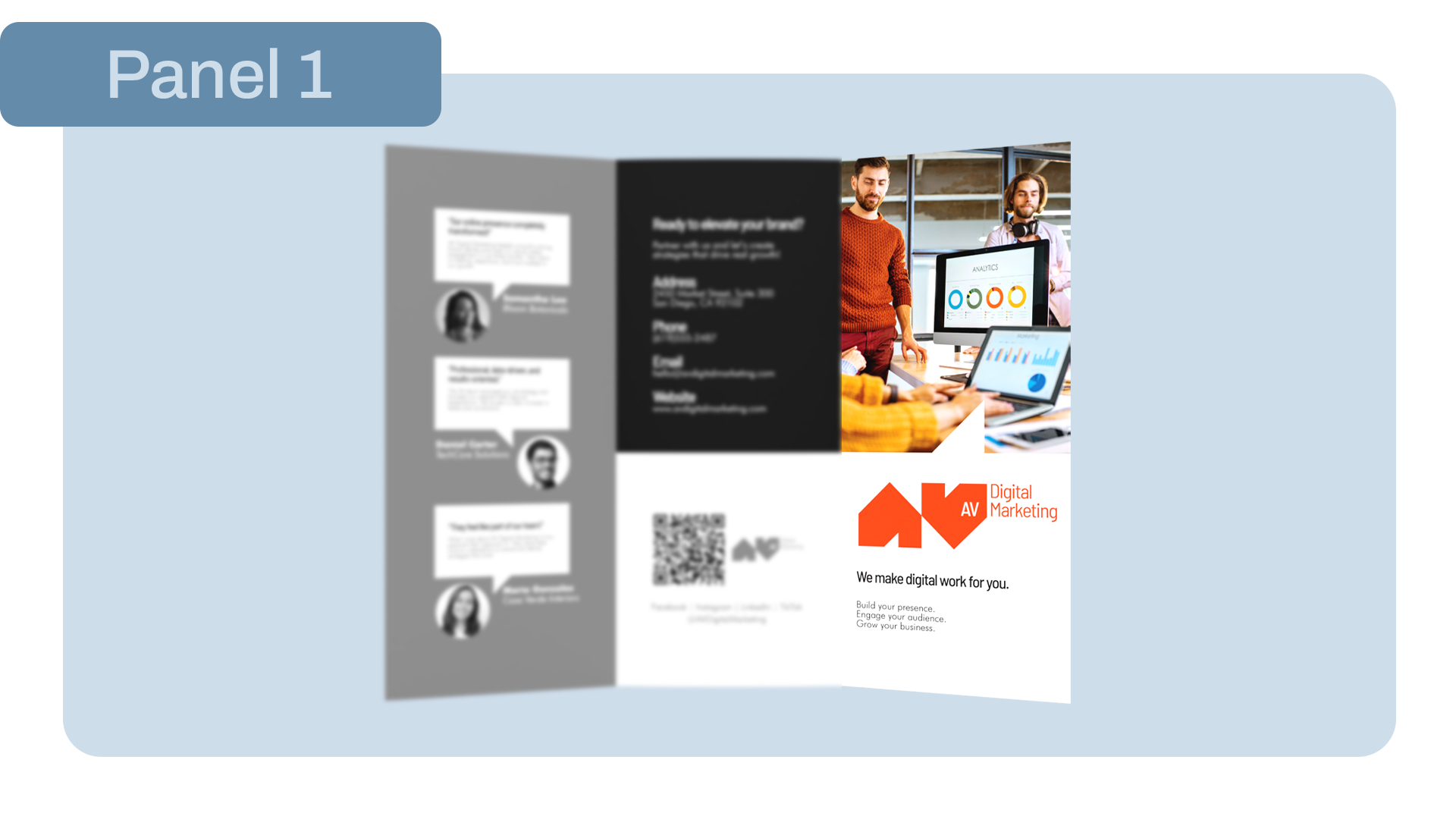
Design idea: Put all the elements that entice the reader to open the brochure and continue reading here. Text should be minimal, and focus should be on the images that represent the brand or promotion.
Panel 2: The first section that the reader encounters when they unfold the brochure. Many see this section as the most vital to keep the readers engaged.
Often this flap contains both questions and answers that tell the reader why this product, service, or event is necessary.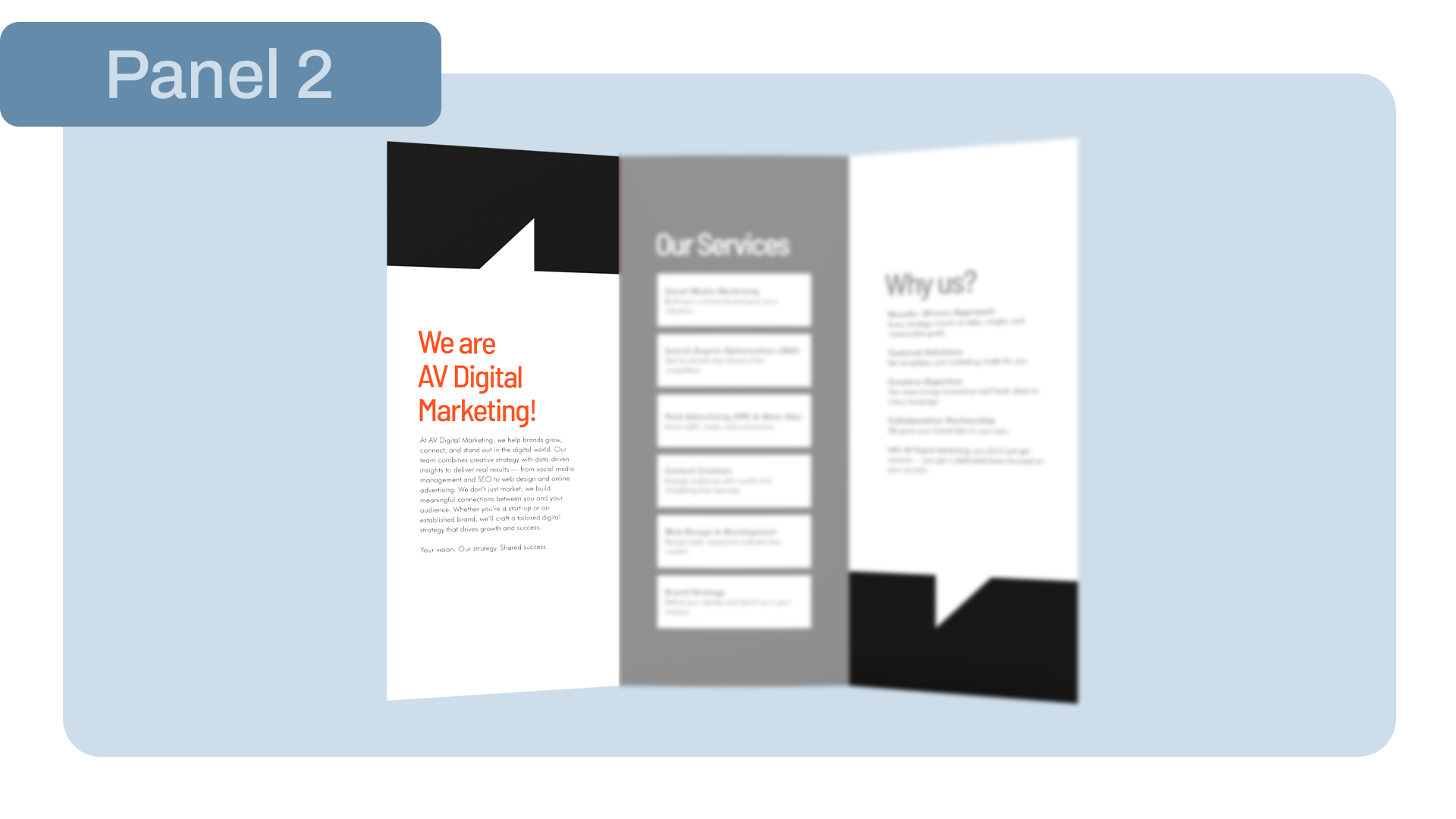
Design idea: Center your text and visuals into answering this question: “Why us?” List down all the unique selling points and general services you offer and upsell them through simple bullet points and images.
Panels 3 & 4: Unfolding the brochure’s right wing opens its full interior, usually containing all relevant information.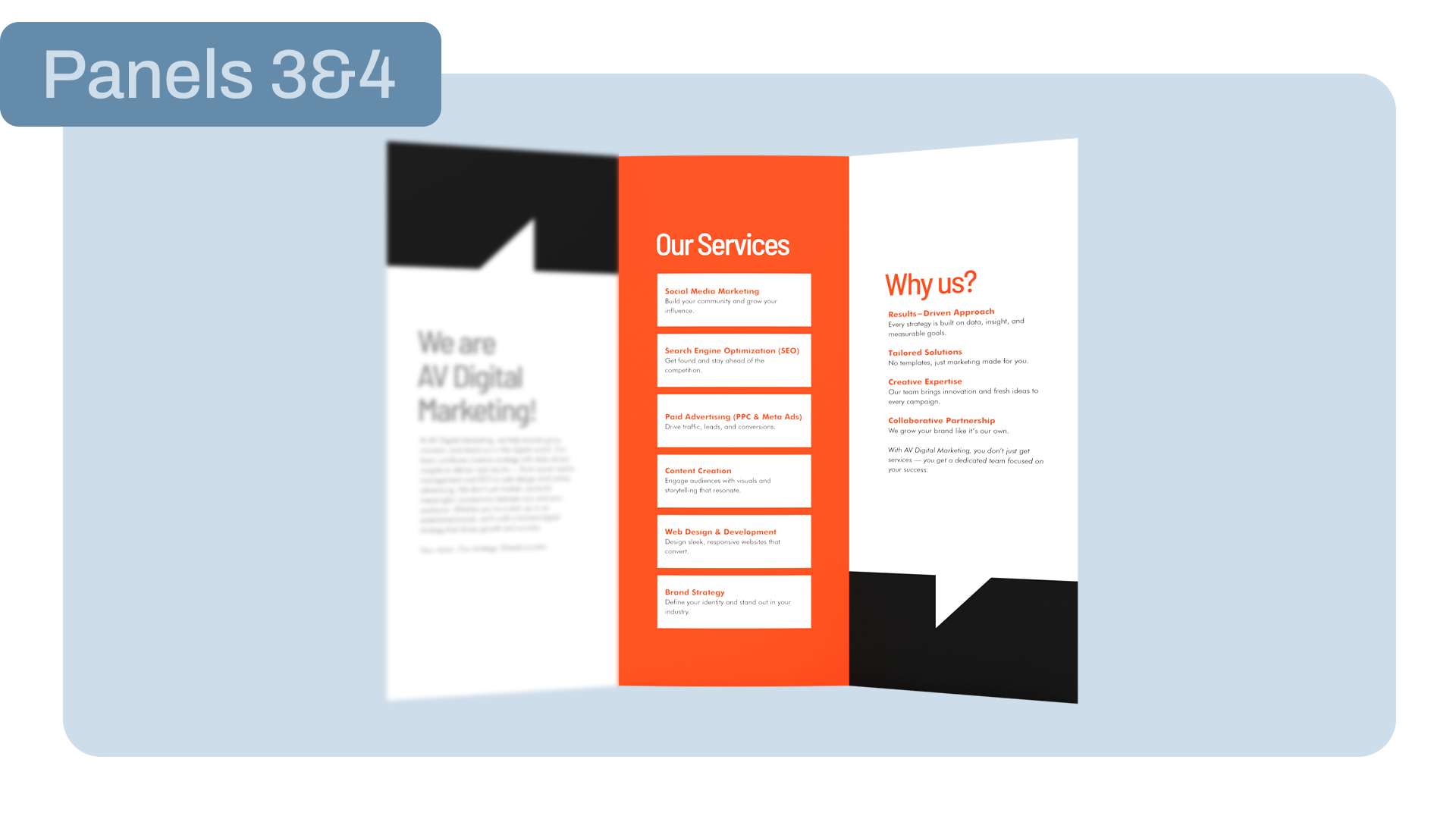
Design idea: Maximize panel 3 & 4’s space to showcase all relevant information about your brand or your promotional campaign. Use bullet points and short sentences so they can be skimmed through quickly and easier to understand.
You may also want to add visual cues and images that support most of the written text.
Panel 5: The outer right-wing panel usually offers extra information such as testimonials, a mini calendar of events, or a discount coupon. Some even leave this section blank for notetaking.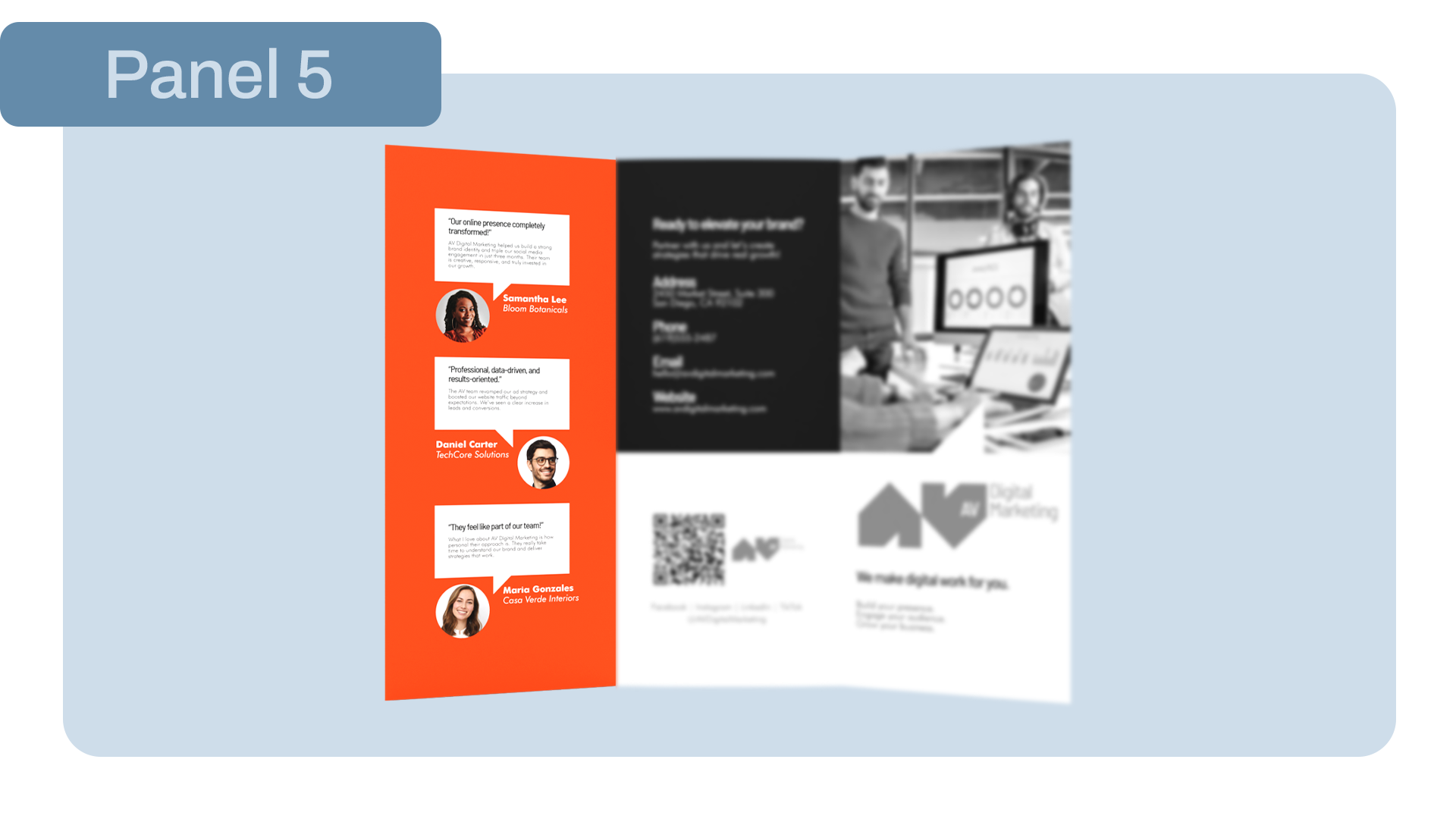
Design idea: Testimonials are great for convincing readers to purchase the brand’s product or service. It’s best to make an organized and clean design that highlights their reviews.
Panel 6: The outside back panel is usually reserved for contact details. Your company address, phone numbers, email, and QR codes are often placed here, completing your trifold brochure design.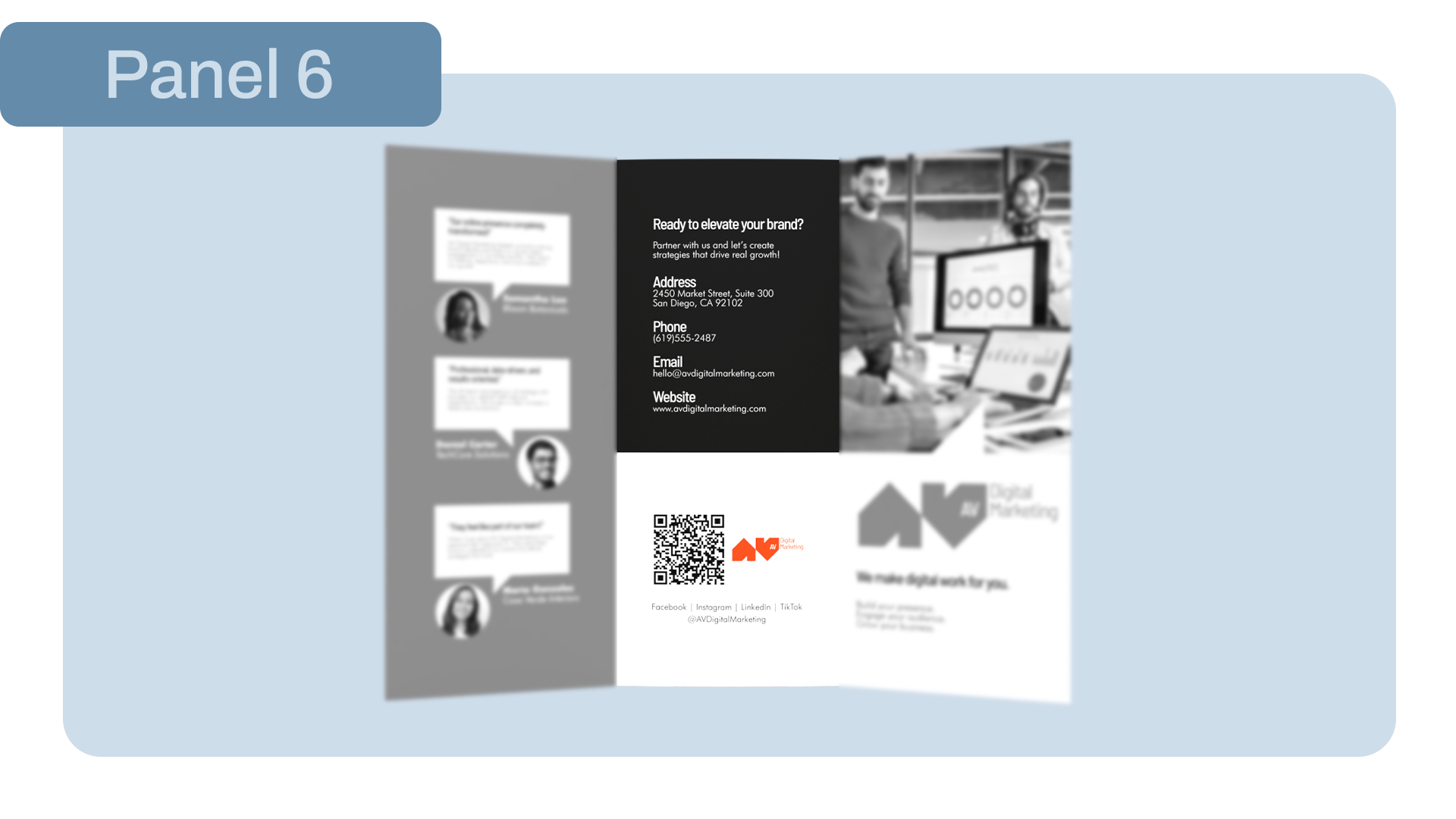
Design idea: Organize and layout your details so they’re visible and readable. Ensure the contact information is accurate and the QR code links to your website properly.
If you’re using the brochure as a direct mail piece, this back section provides the proper mailing address and stamp area.
Last-Minute Tips to Organize Your Brochure Layout
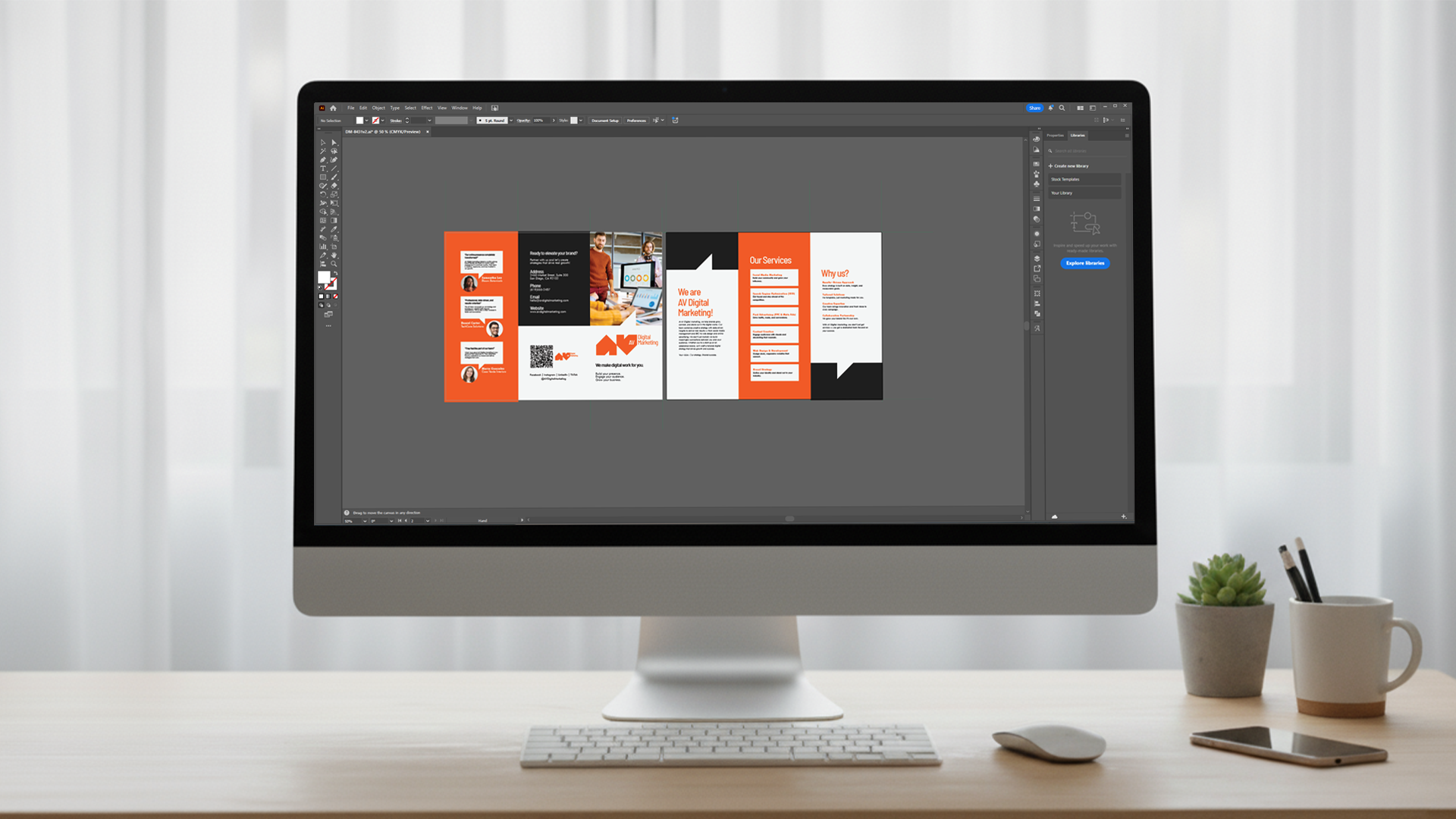
Each brochure panel serves the purpose of informing and attracting customers to your brand. A visually pleasing cover, complete details inside, and the proper contact information at the back, round every element together to attract and inform customers interested in your brand. The real magic happens when all these sections work together through wise design choices. Here are a few tips to help you pull it off:
- Focus on your promotion or campaign: Make sure every panel ties back to your main message.
- Stick to consistent fonts and sizes: Use readable fonts that will make your brochure look professional and easy to read.
- Use high-quality images: 300 dpi images that guide your readers to make your panels stand out more.
- Balance text and visuals: Maximize the spaces on each panel and organize a consistent layout so readers stay engaged from start to finish.
Creating a meticulous trifold brochure layout can help you develop a powerful marketing tool to distribute at trade shows and conferences proudly. Once you're happy with the layout, let PrintPlace assist you with your trifold brochure printing, bringing your design to life.
Brochure Printing
PrintPlace.com can take your business to new heights! Capitalize on high quality brochure printing at low prices every day. Shop our brochures and see for yourself.



